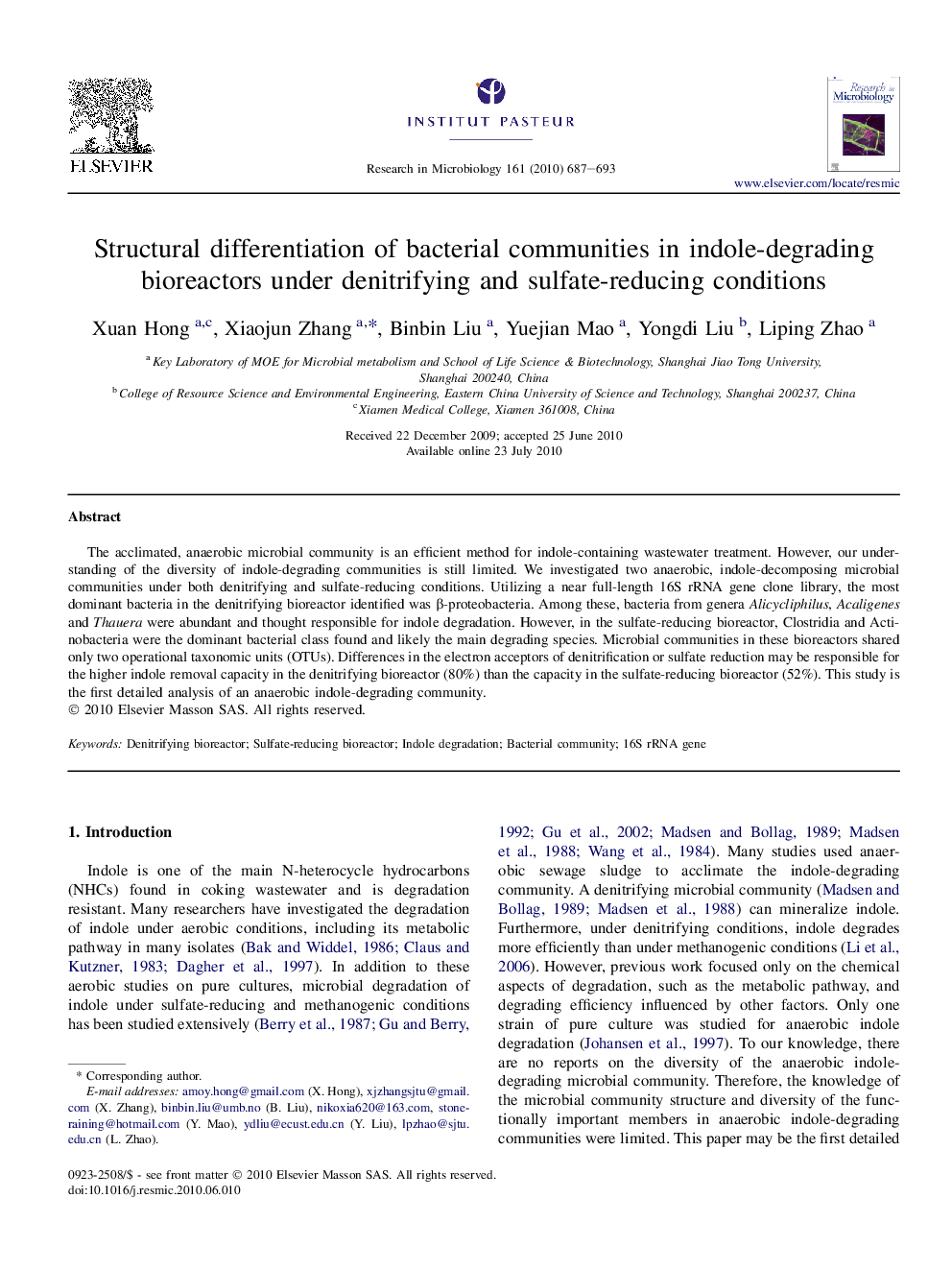| Article ID | Journal | Published Year | Pages | File Type |
|---|---|---|---|---|
| 4359192 | Research in Microbiology | 2010 | 7 Pages |
The acclimated, anaerobic microbial community is an efficient method for indole-containing wastewater treatment. However, our understanding of the diversity of indole-degrading communities is still limited. We investigated two anaerobic, indole-decomposing microbial communities under both denitrifying and sulfate-reducing conditions. Utilizing a near full-length 16S rRNA gene clone library, the most dominant bacteria in the denitrifying bioreactor identified was β-proteobacteria. Among these, bacteria from genera Alicycliphilus, Acaligenes and Thauera were abundant and thought responsible for indole degradation. However, in the sulfate-reducing bioreactor, Clostridia and Actinobacteria were the dominant bacterial class found and likely the main degrading species. Microbial communities in these bioreactors shared only two operational taxonomic units (OTUs). Differences in the electron acceptors of denitrification or sulfate reduction may be responsible for the higher indole removal capacity in the denitrifying bioreactor (80%) than the capacity in the sulfate-reducing bioreactor (52%). This study is the first detailed analysis of an anaerobic indole-degrading community.
